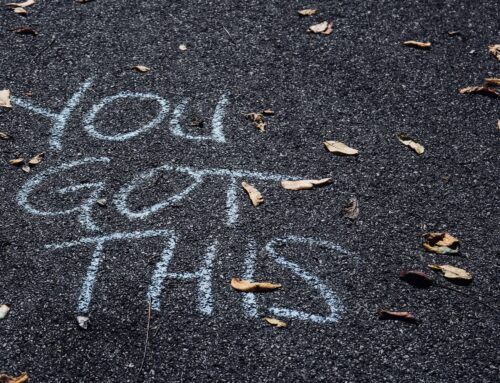Do you consider yourself a creative person? Is someone more creative if they actually complete those projects they have pinned on Pinterest? Authors, artists, and photographers are often categorized as “creative” but what about you as a nonprofit communications pro? If you ever thought “I wish I was more creative” then this post by Michael Michalko is for you. We’ll list the first six things today and the last six tomorrow. ~Kivi
Guest Post by Michael Michalko author of Thinkertoys: A Handbook of Creative Thinking Techniques
1. YOU ARE CREATIVE. The artist is not a special person, each one of us is a special kind of artist. Every one of us is born a creative, spontaneous thinker. The only difference between people who are creative and people who are not is a simple belief. Creative people believe they are creative. People who believe they are not creative, are not. Once you have a particular identity and set of beliefs about yourself, you become interested in seeking out the skills needed to express your identity and beliefs. This is why people who believe they are creative become creative. If you believe you are not creative, then there is no need to learn how to become creative and you don’t. The reality is that believing you are not creative excuses you from trying or attempting anything new. When someone tells you that they are not creative, you are talking to someone who has no interest and will make no effort to be a creative thinker.
2. CREATIVE THINKING IS WORK. You must have passion and the determination to immerse yourself in the process of creating new and different ideas. Then you must have patience to persevere against all adversity. All creative geniuses work passionately hard and produce incredible numbers of ideas, most of which are bad. In fact, more bad poems were written by the major poets than by minor poets. Thomas Edison created 3000 different ideas for lighting systems before he evaluated them for practicality and profitability. Wolfgang Amadeus Mozart produced more than six hundred pieces of music, including forty-one symphonies and some forty-odd operas and masses, during his short creative life. Rembrandt produced around 650 paintings and 2,000 drawings and Picasso executed more than 20,000 works. Shakespeare wrote 154 sonnets. Some were masterpieces, while others were no better than his contemporaries could have written, and some were simply bad.
3. YOU MUST GO THROUGH THE MOTIONS. When you are producing ideas, you are replenishing neurotransmitters linked to genes that are being turned on and off in response to what your brain is doing, which in turn is responding to challenges. When you go through the motions of trying to come up with new ideas, you are energizing your brain by increasing the number of contacts between neurons. The more times you try to get ideas, the more active your brain becomes and the more creative you become. If you want to become an artist and all you did was paint a picture every day, you will become an artist. You may not become another Vincent Van Gogh, but you will become more of an artist than someone who has never tried.
4. YOUR BRAIN IS NOT A COMPUTER. Your brain is a dynamic system that evolves its patterns of activity rather than computes them like a computer. It thrives on the creative energy of feedback from experiences real or fictional. You can synthesize experience; literally create it in your own imagination. The human brain cannot tell the difference between an “actual” experience and an experience imagined vividly and in detail. This discovery is what enabled Albert Einstein to create his thought experiments with imaginary scenarios that led to his revolutionary ideas about space and time. One day, for example, he imagined falling in love. Then he imagined meeting the woman he fell in love with two weeks after he fell in love. This led to his theory of acausality. The same process of synthesizing experience allowed Walt Disney to bring his fantasies to life.
5. THERE IS NO ONE RIGHT ANSWER. Reality is ambiguous. Aristotle said it is either A or not-A. It cannot be both. The sky is either blue or not blue. This is black and white thinking as the sky is a billion different shades of blue. A beam of light is either a wave or not a wave (A or not-A). Physicists discovered that light can be either a wave or particle depending on the viewpoint of the observer. The only certainty in life is uncertainty. When trying to get ideas, do not censor or evaluate them as they occur. Nothing kills creativity faster than self-censorship of ideas while generating them. Think of all your ideas as possibilities and generate as many as you can before you decide which ones to select. The world is not black or white. It is grey.
6. NEVER STOP WITH YOUR FIRST GOOD IDEA. Always strive to find a better one and continue until you have one that is still better. In 1862, Phillip Reis demonstrated his invention which could transmit music over the wires. He was days away from improving it into a telephone that could transmit speech. Every communication expert in Germany dissuaded him from making improvements, as they said the telegraph is good enough. No one would buy or use a telephone. Ten years later, Alexander Graham Bell patented the telephone. Spencer Silver developed a new adhesive for 3M that stuck to objects but could easily be lifted off. It was first marketed as a bulletin board adhesive so the boards could be moved easily from place to place. There was no market for it. Silver didn’t discard it. One day Arthur Fry, another 3M employee, was singing in the church’s choir when his page marker fell out of his hymnal. Fry coated his page markers with Silver’s adhesive and discovered the markers stayed in place, yet lifted off without damaging the page. Hence the Post-it Notes were born. Thomas Edison was always trying to spring board from one idea to another in his work. He spring boarded his work from the telephone (sounds transmitted) to the phonograph (sounds recorded) and, finally, to motion pictures (images recorded).
Michael Michalko is the author of the highly acclaimed Thinkertoys: A Handbook of Creative Thinking Techniques; Cracking Creativity: The Secrets of Creative Genius; ThinkPak: A Brainstorming Card Deck and Creative Thinkering: Putting Your Imagination to Work. His web site is: www.creativethinking.net







